Abstract
Between 2% and 9% of patients with cancer present with metastatic nonsquamous cell carcinoma of unknown primary origin. Traditionally, a series of investigations is undertaken to locate the primary origin of the tumour, although many of these tests are often painful or distressing to patients, unsuccessful in locating the primary site and costly to the health care system. Moreover, even if a tumour is found it usually cannot be treated surgically. However, a small number of cancers of unknown primary origin can be cured, arrested or effectively palliated with systemic treatment. This study compares the costs and outcomes of the current practice of comprehensively searching for the primary tumour with those of an alternative, limited approach that identifies only the primary tumours for which relatively effective systemic therapy exists. Decision trees were constructed for the two diagnostic approaches and their associated therapeutic options. Costs and probabilities were integrated with published data on the survival of patients with each type of cancer. The results indicate that the comprehensive diagnostic strategy may increase 1-year survival rates from 11.0% to 11.5%. On the basis of Ontario cost data it is calculated that the additional costs of a comprehensive search for 1000 patients will range from approximately $2 million to $8 million, depending on the subsequent treatment strategy.
Full text
PDF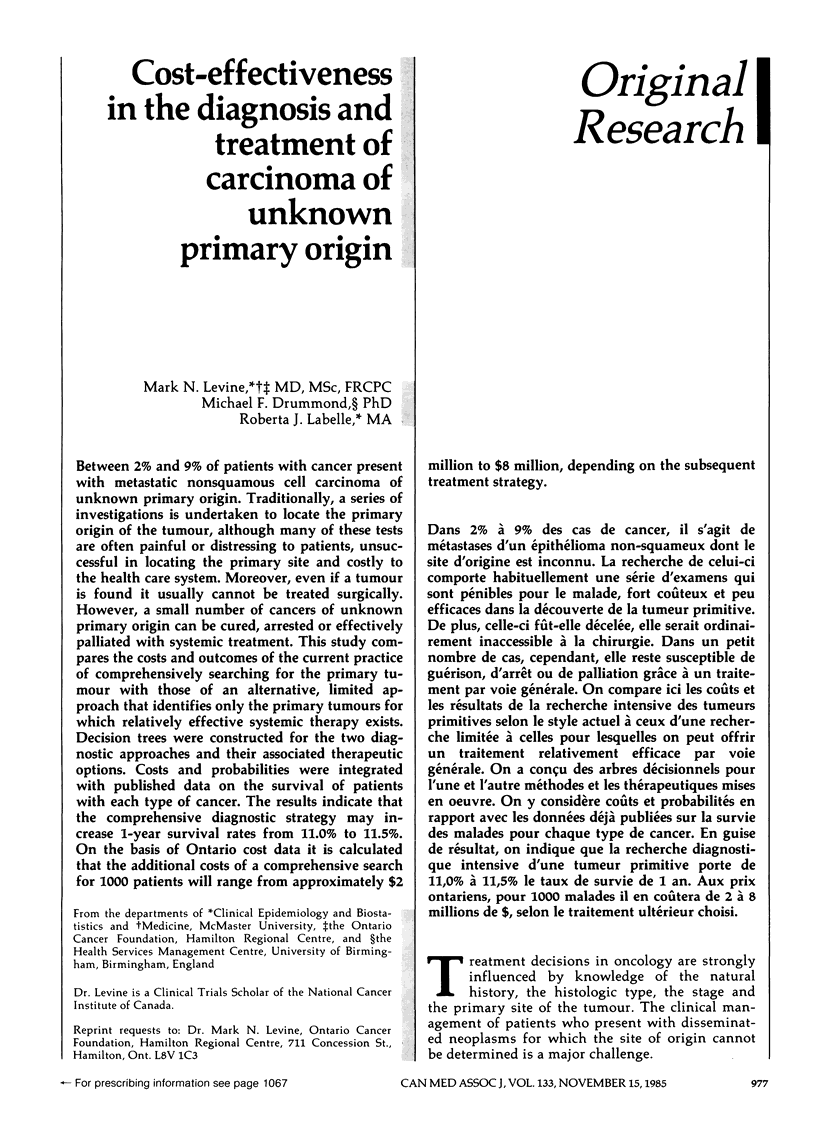
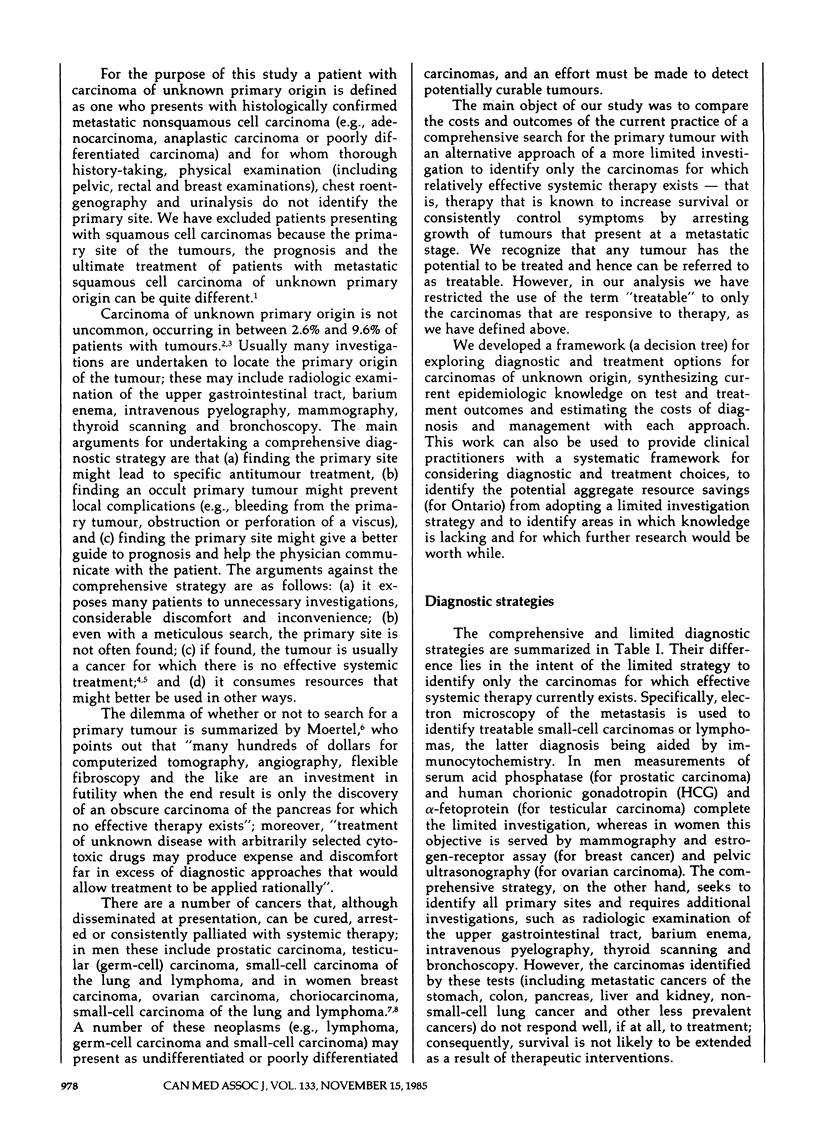
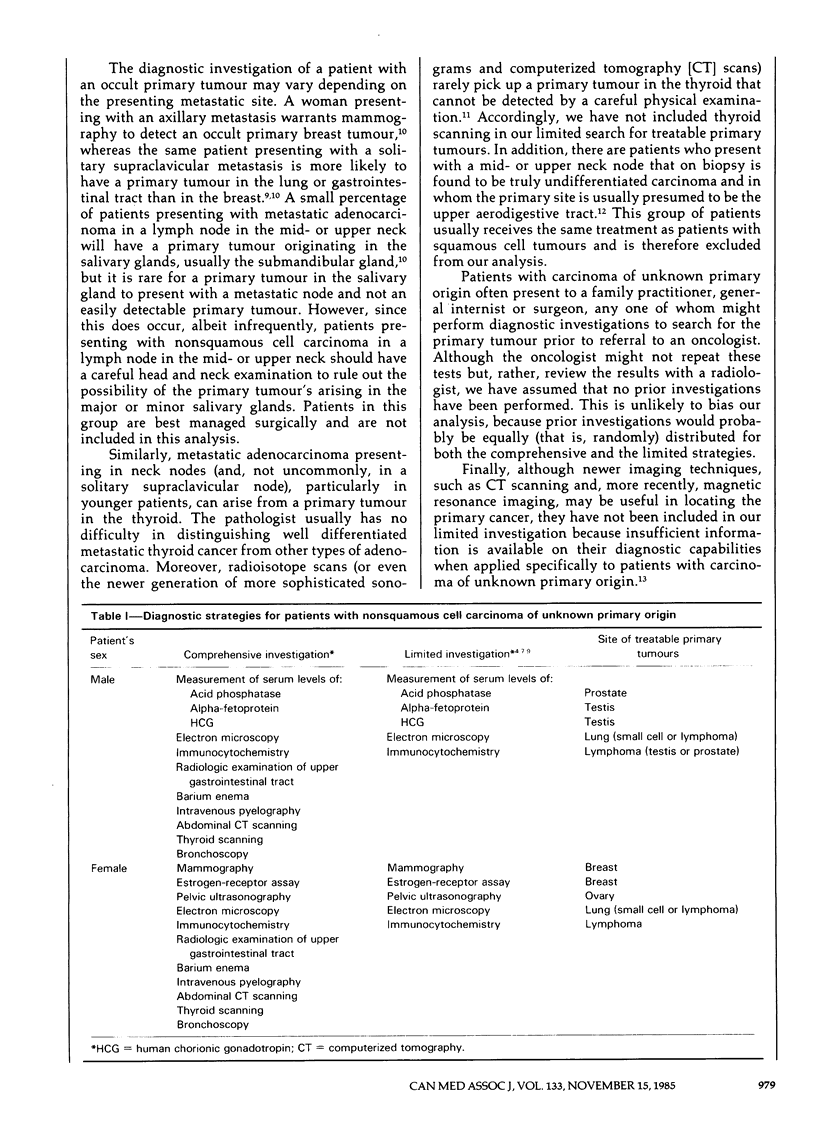
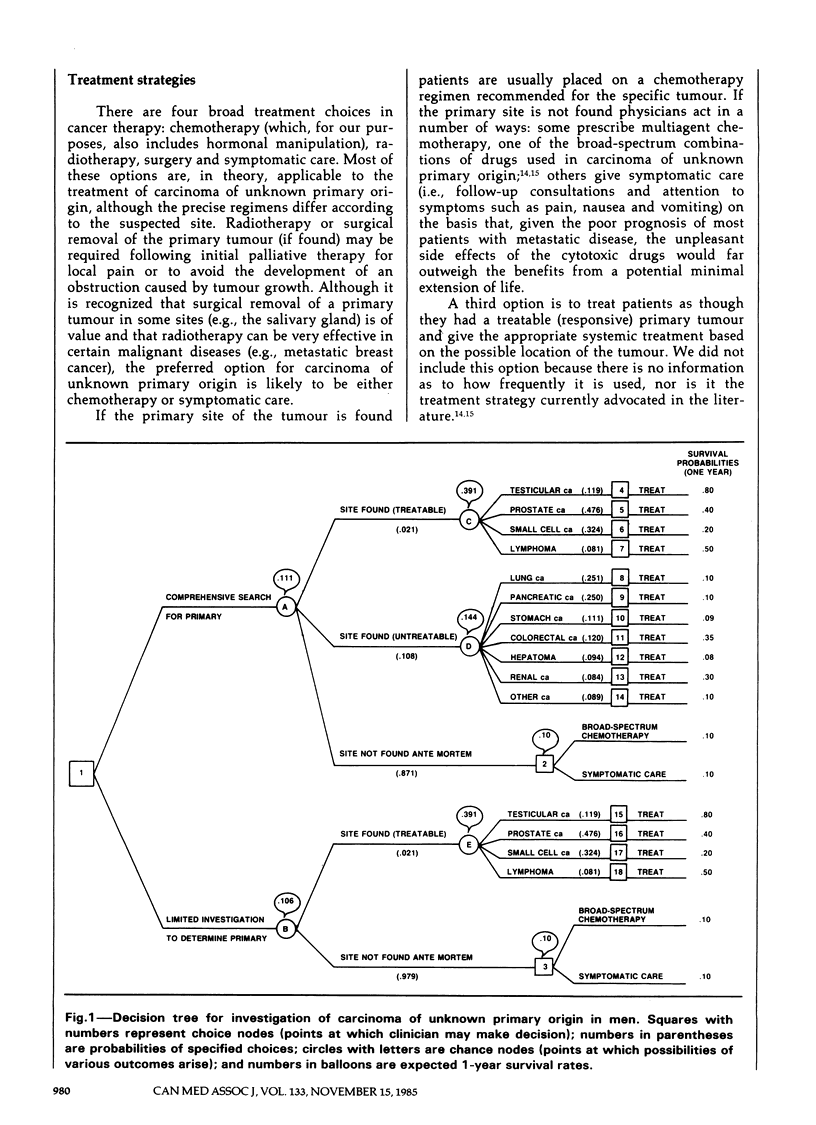
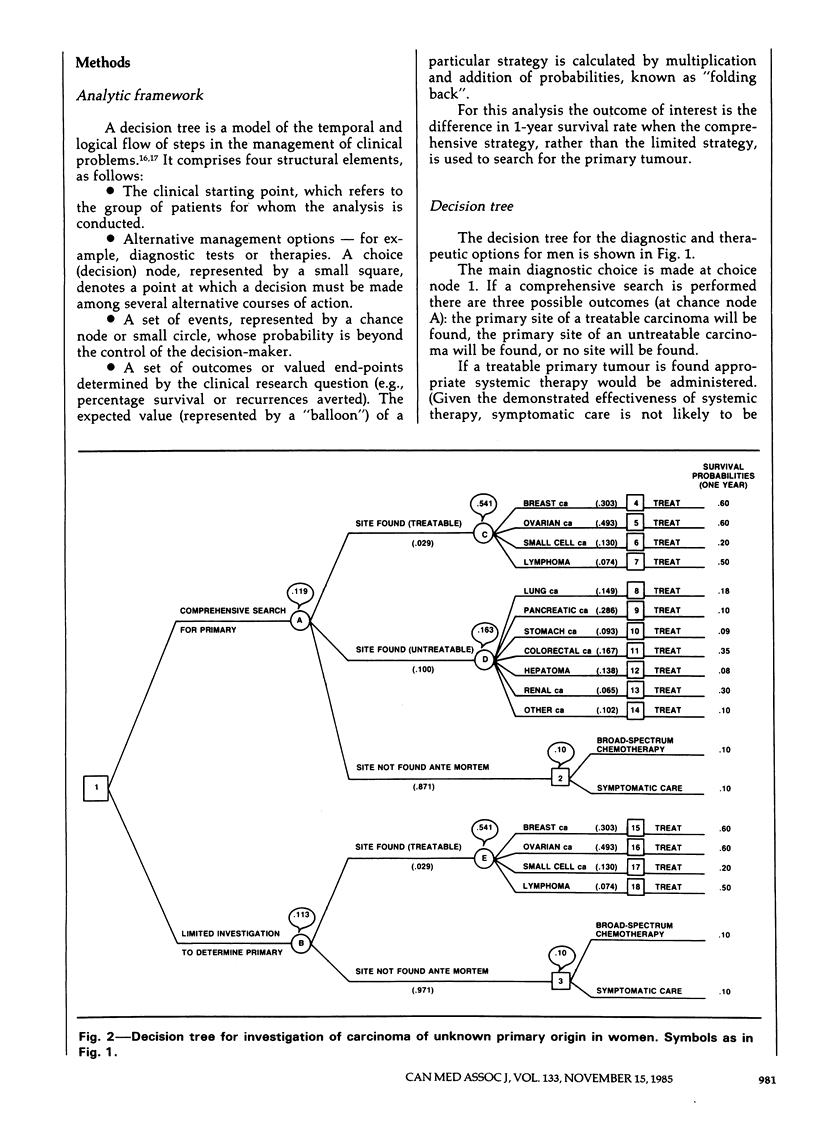
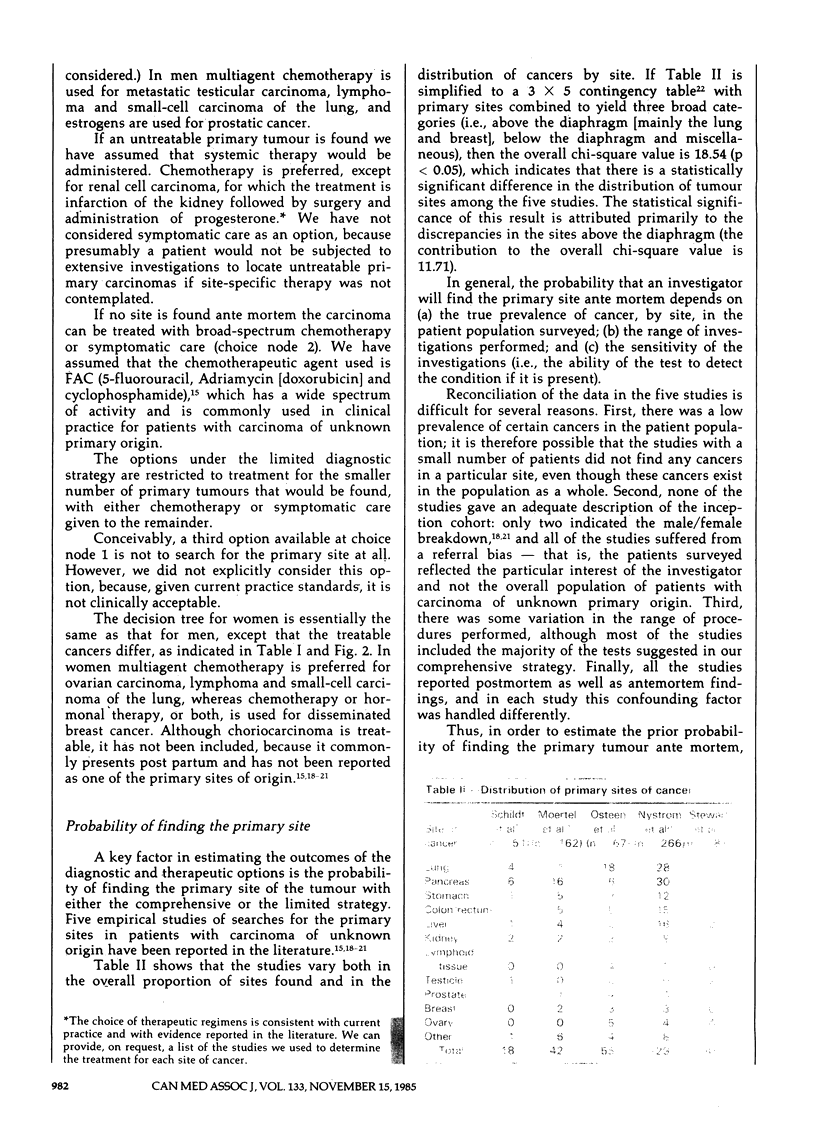
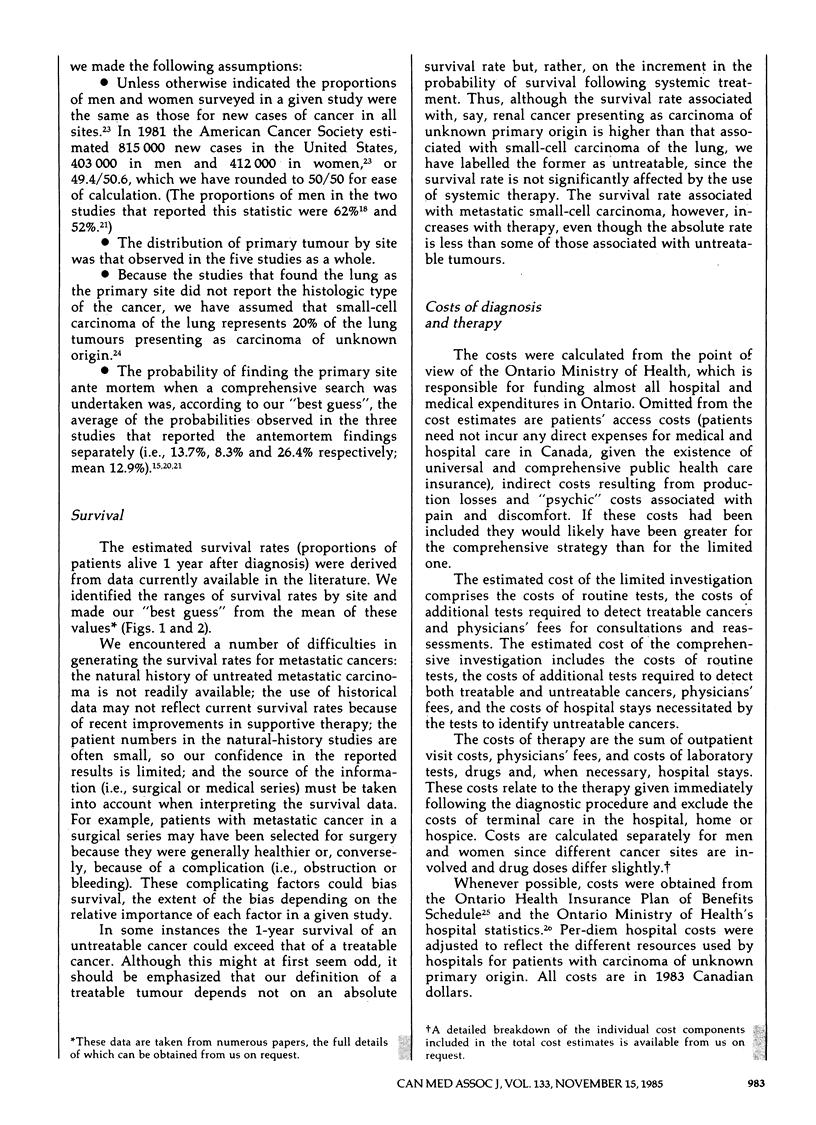
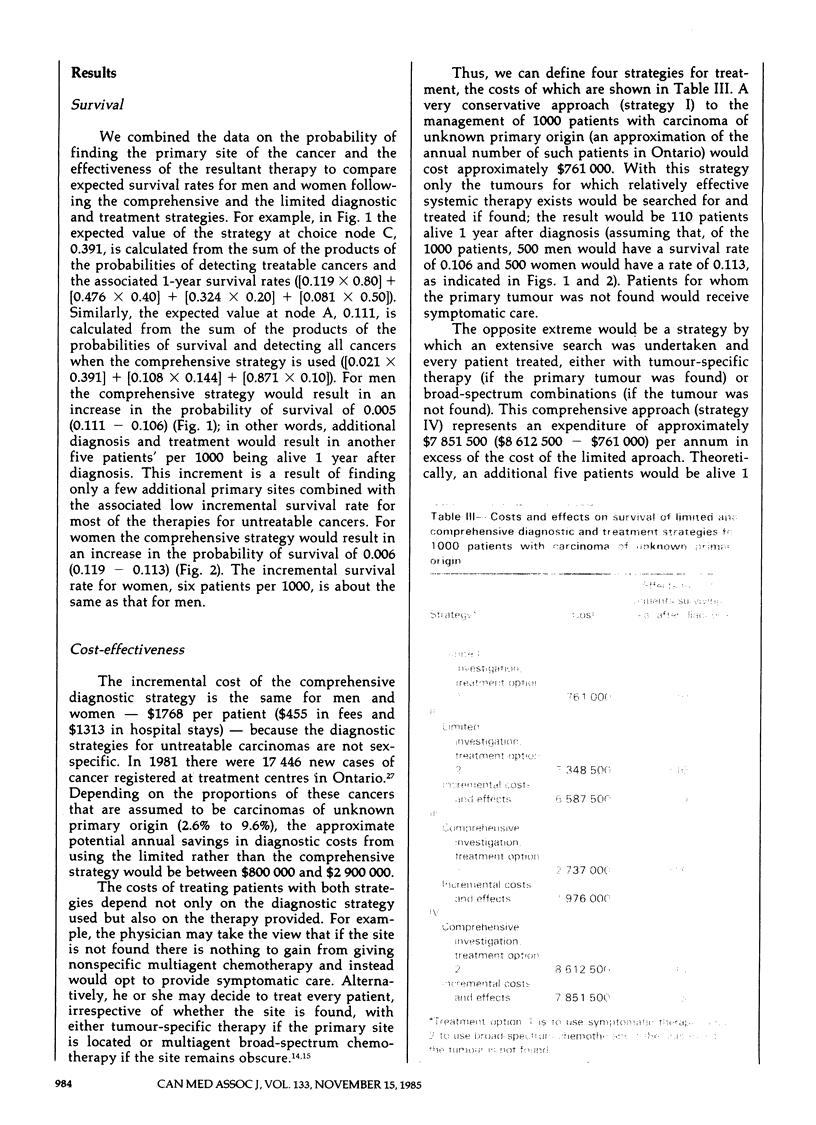
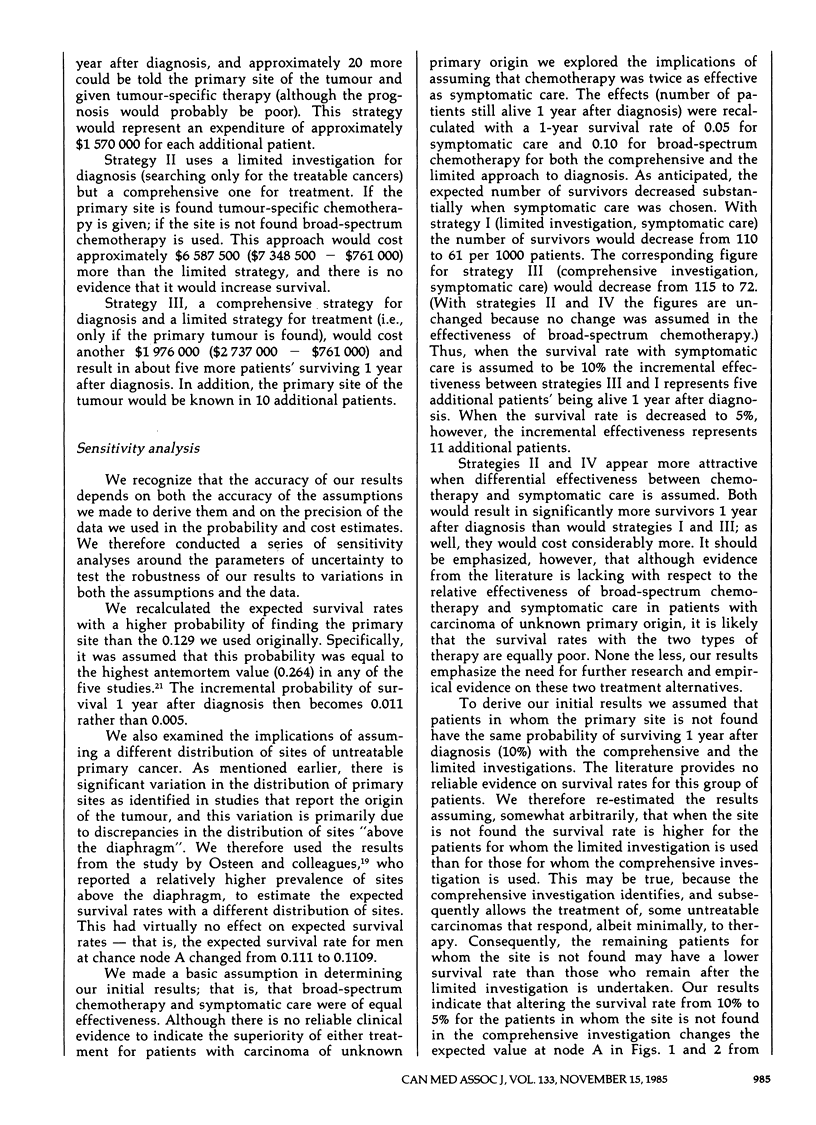
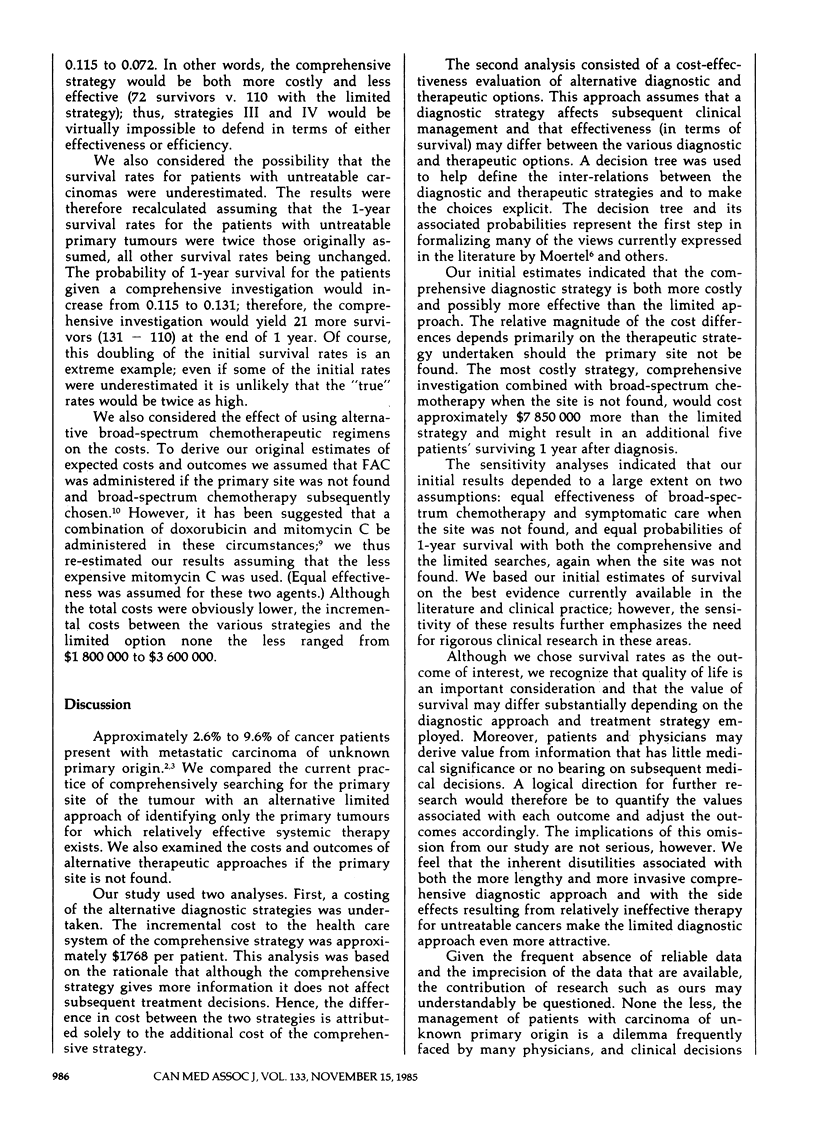
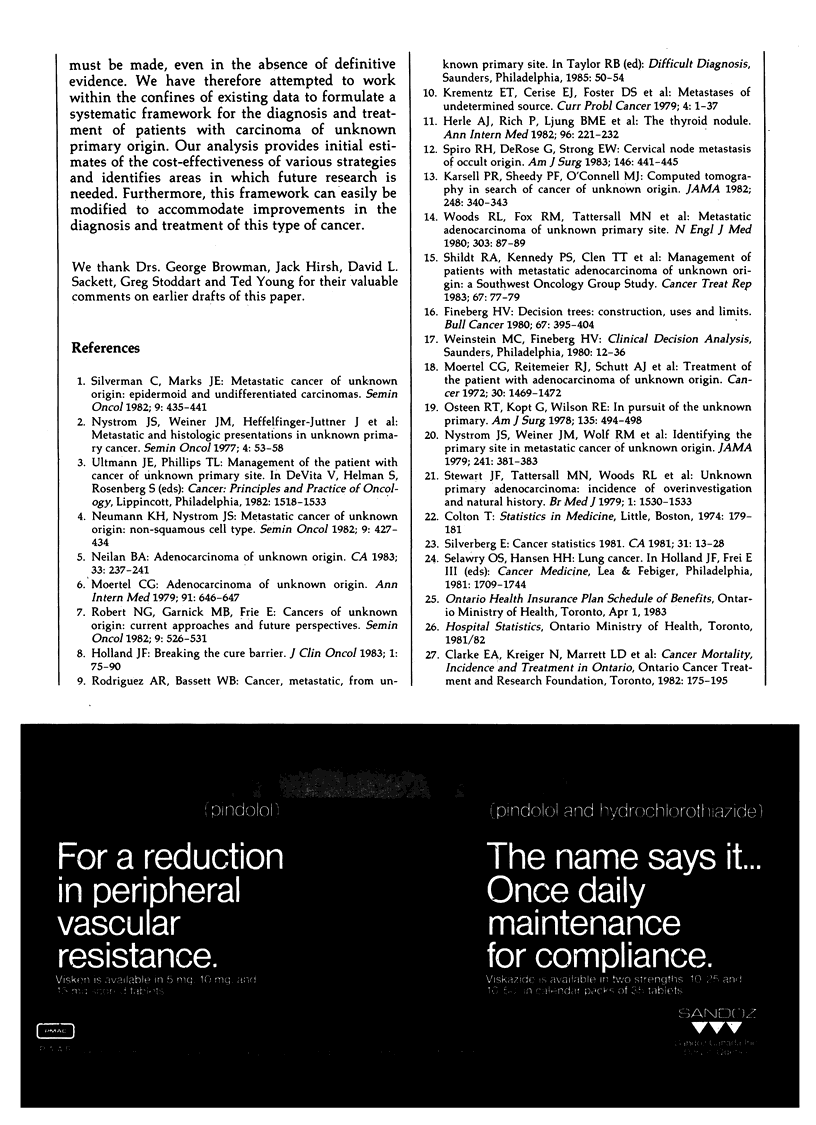
Selected References
These references are in PubMed. This may not be the complete list of references from this article.
- Fineberg H. V. Decision trees: construction, uses, and limits. Bull Cancer. 1980;67(4):395–404. [PubMed] [Google Scholar]
- Holland J. F. Karnofsky Memorial Lecture. Breaking the cure barrier. J Clin Oncol. 1983 Feb;1(2):75–90. doi: 10.1200/JCO.1983.1.2.75. [DOI] [PubMed] [Google Scholar]
- Karsell P. R., Sheedy P. F., 2nd, O'Connell M. J. Computed tomography in search of cancer of unknown origin. JAMA. 1982 Jul 16;248(3):340–343. [PubMed] [Google Scholar]
- Krementz E. T., Cerise E. J., Foster D. S., Morgan L. R., Jr Metastases of undetermined source. Curr Probl Cancer. 1979 Nov;4(5):4–37. doi: 10.1016/s0147-0272(79)80019-7. [DOI] [PubMed] [Google Scholar]
- Moertel C. G. Adenocarcinoma of unknown origin. Ann Intern Med. 1979 Oct;91(4):646–647. doi: 10.7326/0003-4819-91-4-646. [DOI] [PubMed] [Google Scholar]
- Moertel C. G., Reitemeier R. J., Schutt A. J., Hahn R. G. Treatment of the patient with adenocarcinoma of unknown origin. Cancer. 1972 Dec;30(6):1469–1472. doi: 10.1002/1097-0142(197212)30:6<1469::aid-cncr2820300609>3.0.co;2-t. [DOI] [PubMed] [Google Scholar]
- Neilan B. A. Adenocarcinoma of unknown origin. CA Cancer J Clin. 1983 Jul-Aug;33(4):237–241. doi: 10.3322/canjclin.33.4.237. [DOI] [PubMed] [Google Scholar]
- Neumann K. H., Nystrom J. S. Metastatic cancer of unknown origin: nonsquamous cell type. Semin Oncol. 1982 Dec;9(4):427–434. [PubMed] [Google Scholar]
- Nystrom J. S., Weiner J. M., Heffelfinger-Juttner J., Irwin L. E., Bateman J. R., Wolf R. M. Metastatic and histologic presentations in unknown primary cancer. Semin Oncol. 1977 Mar;4(1):53–58. [PubMed] [Google Scholar]
- Nystrom J. S., Weiner J. M., Wolf R. M., Bateman J. R., Viola M. V. Identifying the primary site in metastatic cancer of unknown origin. Inadequacy of roentgenographic procedures. JAMA. 1979 Jan 26;241(4):381–383. [PubMed] [Google Scholar]
- Osteen R. T., Kopf G., Wilson R. E. In pursuit of the unknown primary. Am J Surg. 1978 Apr;135(4):494–497. doi: 10.1016/0002-9610(78)90026-0. [DOI] [PubMed] [Google Scholar]
- Robert N. J., Garnick M. B., Frei E., 3rd Cancers of unknown origin: current approaches and future perspectives. Semin Oncol. 1982 Dec;9(4):526–531. [PubMed] [Google Scholar]
- Shildt R. A., Kennedy P. S., Chen T. T., Athens J. W., O'Bryan R. M., Balcerzak S. P. Management of patients with metastatic adenocarcinoma of unknown origin: a Southwest Oncology Group study. Cancer Treat Rep. 1983 Jan;67(1):77–79. [PubMed] [Google Scholar]
- Silverberg E. Cancer statistics, 1981. CA Cancer J Clin. 1981 Jan-Feb;31(1):13–28. doi: 10.3322/canjclin.31.1.13. [DOI] [PubMed] [Google Scholar]
- Silverman C., Marks J. E. Metastatic cancer of unknown origin: epidermoid and undifferentiated carcinomas. Semin Oncol. 1982 Dec;9(4):435–441. [PubMed] [Google Scholar]
- Spiro R. H., DeRose G., Strong E. W. Cervical node metastasis of occult origin. Am J Surg. 1983 Oct;146(4):441–446. doi: 10.1016/0002-9610(83)90227-1. [DOI] [PubMed] [Google Scholar]
- Stewart J. F., Tattersall M. H., Woods R. L., Fox R. M. Unknown primary adenocarcinoma: incidence of overinvestigation and natural history. Br Med J. 1979 Jun 9;1(6177):1530–1533. doi: 10.1136/bmj.1.6177.1530. [DOI] [PMC free article] [PubMed] [Google Scholar]
- The thyroid nodule. Ann Intern Med. 1982 Feb;96(2):221–232. doi: 10.7326/0003-4819-96-2-221. [DOI] [PubMed] [Google Scholar]
- Woods R. L., Fox R. M., Tattersall M. H., Levi J. A., Brodie G. N. Metastatic adenocarcinomas of unknown primary site: a randomized study of two combination-chemotherapy regimens. N Engl J Med. 1980 Jul 10;303(2):87–89. doi: 10.1056/NEJM198007103030205. [DOI] [PubMed] [Google Scholar]


